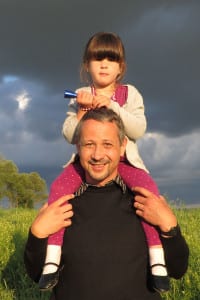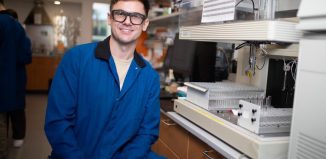The battle is like a game of chess, with each side making moves and countermoves to gain the upper hand. The difference between this contest and a game two players can walk away from is that the stakes are considerably higher, often marking the difference between life and death.
Predicting the responses of enemies like drug-resistant infections and cancers are critical to winning the high stakes battle.
Gábor Balázsi, a Henry Laufer associate professor of physical and quantitative biology at Stony Brook University, has created a synthetic biological model to understand how systems react to stresses such as antibiotic treatments, or, to extend the metaphor, different moves on the chess board.

He inserted genetic codes into yeast. Some start-up companies have tried to employ these techniques to increase the efficiency of the production of energy or medications.
Companies “engineer bacteria to do something good, but will they be stable? Will they stay the way you engineered them? It’s important to know how long it’ll last, when it’ll break and when you should start a new culture,” Balázsi said.
Indeed, Balázsi used computer simulations and mathematical models to predict the evolutionary fate of these synthetic gene circuits and then tested these predictions through experiments.
In these experiments, Balázsi introduced drugs that would test the yeast’s ability to tap into the inserted genes and make the kind of changes necessary to survive. In some of the experiments, he introduced another chemical that could turn on the synthetic genes. He published this work recently in the scientific journal, Molecular Systems Biology.
In one of the experiments, Balázsi did not enable the yeast to activate the drug resistance gene, and yet, the yeast figured out how to use that gene on its own. These mutations happened in the synthetic gene circuit and in the yeast genome. The mutations gave the yeast the ability to turn on its inserted genetic code.
“The yeast figures out how to start activating those genes without us enabling it to do so,” he said.
This is akin to putting a trombone next to a saxophone player, without teaching the sax player how to make music on the brass instrument. Without any need to play the trombone, the musician might stick with the instrument familiar to her. With enough motivation, such as playing in a high-paying wedding, the sax player is likely to retrain herself on the new instrument. Balázsi is seeking to understand how yeast make similar kinds of genetic changes to survive during drug treatment.
A physicist by training, Balázsi feels driven by the desire to make models that can make predictions. He hopes these kinds of experiments can find an application in the ongoing battle with drug resistance and diseases.
“His physics background provides him with a larger scale systems view of what’s happening,” said James Collins, a professor in the Department of Biological Engineering at the Massachusetts Institute of Technology. “He’s one of the pioneers at introducing network approaches into biology.”
Collins and Balázsi worked together when Balázsi was a postdoctoral researcher. The two researchers recently discussed beginning a collaboration using network biology on tuberculosis.
Working with yeast makes it possible to make the kinds of evolutionary predictions and conduct experiments that would be considerably more difficult with animals. With yeast, he can observe as many as 80 generations within 10 days because yeast divide eight to 10 times in the lab. Observing genetic changes in response to environmental conditions over a few weeks with yeast would be like traveling through centuries with animals or millennia with humans.
Last year, Balázsi completed a five-year grant from the National Institutes of Health through the Director’s Program.
While Balázsi is continuing to work with yeast cells, he is now also pursuing research on cancer. He has been working to introduce multiple synthetic gene circuits into cancer, similar to what he did with yeast, aiming to control cancer cells and understand their biology.
A native of Transylvania, a region that is now part of Romania, Balázsi grew up speaking Hungarian and studied Romanian in school. He came to the United States in 1997. He and his wife Erika live in East Setauket with their daughter Julianna. The Balázsi family moved to Long Island last summer.
Balázsi enjoys traveling to New York City and New Jersey, where he and his wife enjoy taking part in traditional Hungarian folk dancing.
The kind of experiments Balázsi has done and would like to continue to do may one day give scientists the ability to anticipate how a cancer or drug-resistant strain of a disease might react to a new treatment.
“If we are clever enough and we design a gene circuit that lures the cells into an evolutionary trap, where they evolve in a certain way that later on becomes disadvantageous, we could possibly help cure” these diseases, he said. This kind of approach and solution, however, is “far away” from the basic knowledge researchers now have because scientists don’t yet understand enough about the evolution of cancer cell populations in humans.






